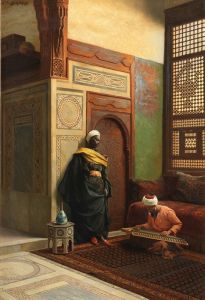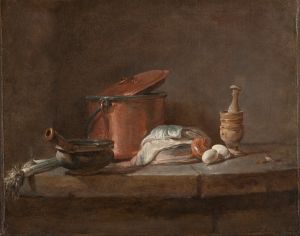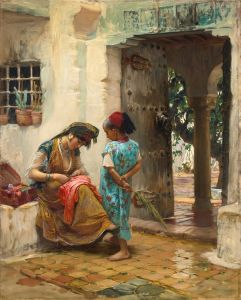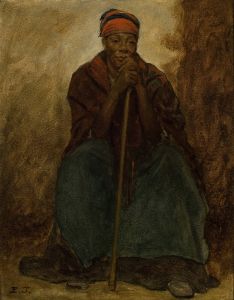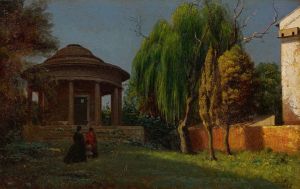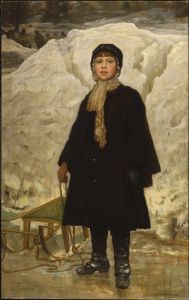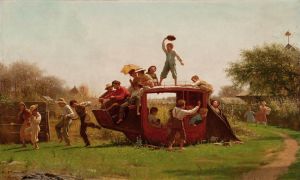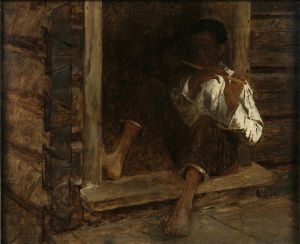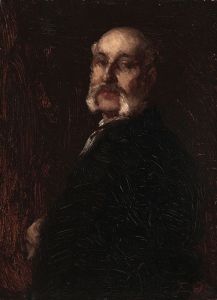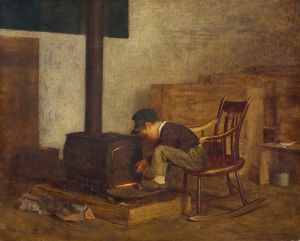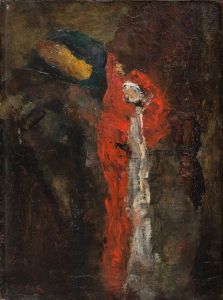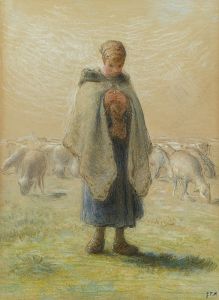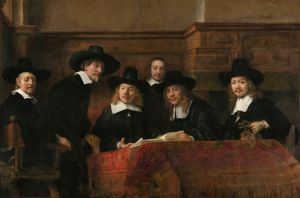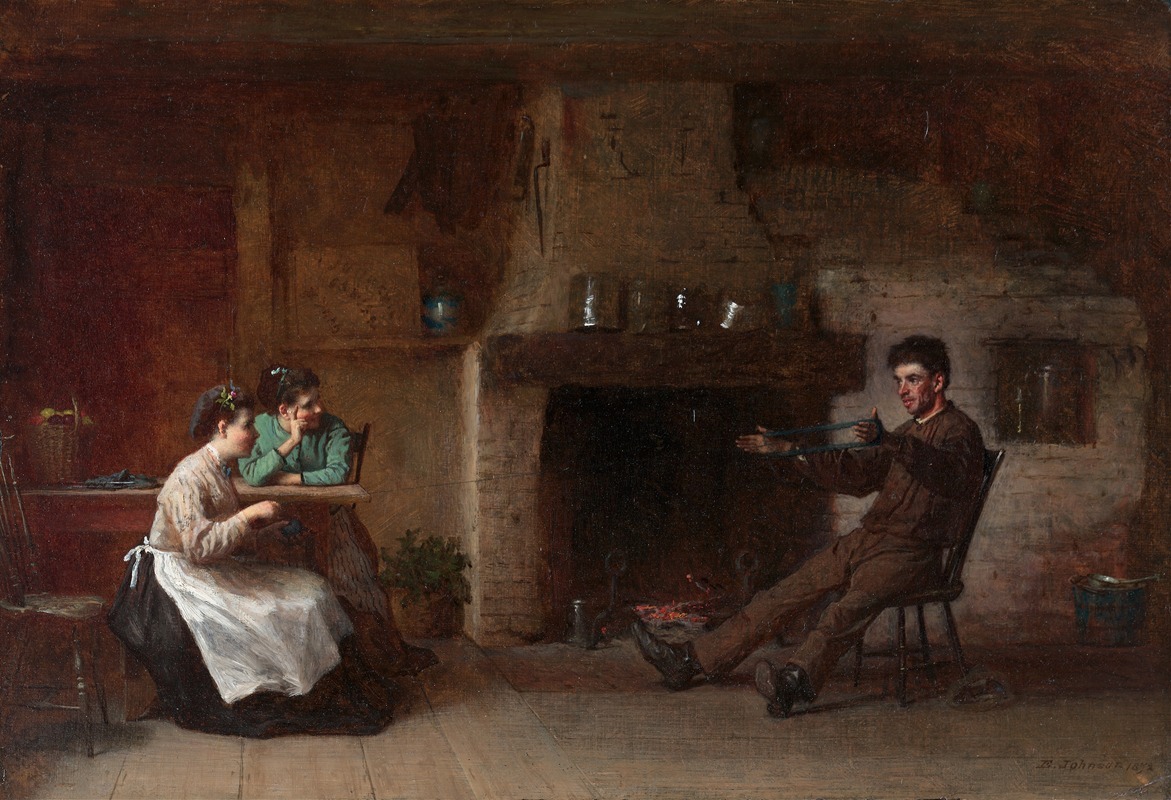
Winding Yarn
A hand-painted replica of Eastman Johnson’s masterpiece Winding Yarn, meticulously crafted by professional artists to capture the true essence of the original. Each piece is created with museum-quality canvas and rare mineral pigments, carefully painted by experienced artists with delicate brushstrokes and rich, layered colors to perfectly recreate the texture of the original artwork. Unlike machine-printed reproductions, this hand-painted version brings the painting to life, infused with the artist’s emotions and skill in every stroke. Whether for personal collection or home decoration, it instantly elevates the artistic atmosphere of any space.
"Winding Yarn" is a painting by the American artist Eastman Johnson, created in 1872. Eastman Johnson (1824-1906) was a prominent 19th-century American painter and co-founder of the Metropolitan Museum of Art in New York City. He is best known for his genre scenes, which often depicted everyday life and domestic activities in America during his time.
"Winding Yarn" exemplifies Johnson's skill in capturing intimate, everyday moments with a sense of realism and warmth. The painting portrays a young girl engaged in the simple, yet meticulous task of winding yarn. She is seated in a modest interior, likely a domestic setting, which is characteristic of Johnson's genre scenes. The girl’s concentration on her task is evident, and Johnson's attention to detail brings a sense of authenticity to the scene.
The composition of "Winding Yarn" is carefully constructed to draw the viewer's attention to the central figure. The light in the painting is soft and natural, illuminating the girl's face and hands, which are the focal points of the work. Johnson's use of light and shadow adds depth and dimension to the painting, enhancing the realism of the scene. The background is kept relatively simple, ensuring that the viewer's focus remains on the girl and her activity.
Johnson's technique in "Winding Yarn" reflects his academic training and his exposure to European art. He studied at the Royal Academy in Düsseldorf and spent time in The Hague, where he was influenced by the Dutch masters. This influence is evident in his meticulous attention to detail and his ability to capture the textures and subtleties of the materials depicted in the painting, such as the yarn, the girl's clothing, and the furnishings of the room.
The painting also reflects Johnson's interest in the themes of domesticity and the everyday lives of ordinary people. During the 19th century, genre painting was a popular way to depict and celebrate the daily activities and experiences of people from various walks of life. "Winding Yarn" fits within this tradition, offering a glimpse into the quiet, industrious moments of a young girl’s life.
Eastman Johnson's works, including "Winding Yarn," are valued for their historical and cultural significance as well as their artistic merit. They provide insight into American life during the 19th century and showcase Johnson's ability to capture the essence of his subjects with empathy and precision. Today, Johnson's paintings are held in numerous public and private collections, and "Winding Yarn" continues to be appreciated for its charming portrayal of a simple, yet universal, human activity.





